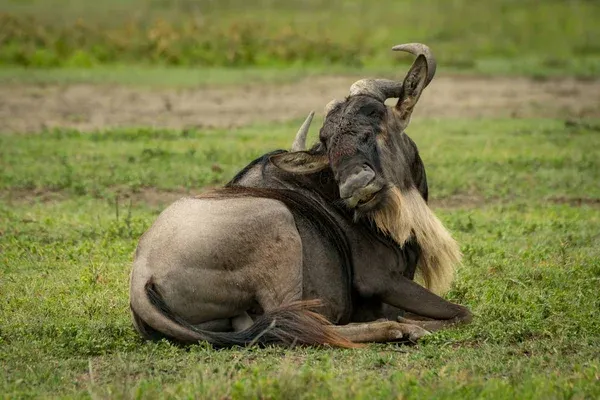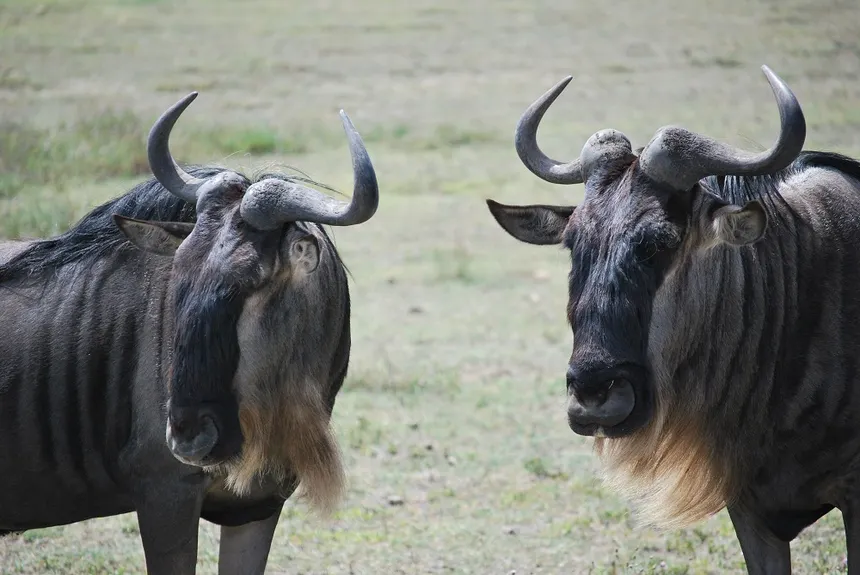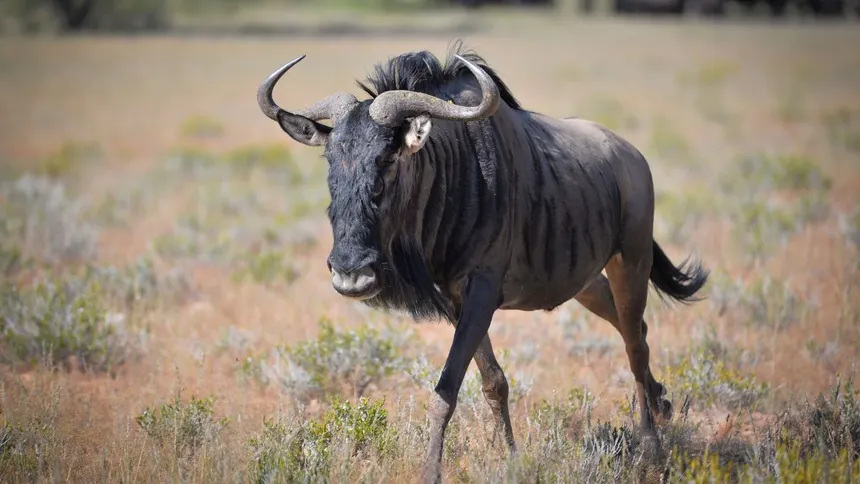Antelopes Gnu’s Weight, Strength, and Survival

The gnu, more commonly known as the wildebeest, is one of the most iconic species of antelope in Africa. These robust and fast-moving grazers are best known for their massive seasonal migrations, during which millions travel across the Serengeti and Maasai Mara ecosystems in search of food and water. But beyond the spectacle of their movement lies a strong and sturdy animal with fascinating traits—including its notable body weight, which plays a key role in survival.
This article dives deep into the weight, physical characteristics, and significance of the gnu in the animal kingdom.
🐃 What Is a Gnu (Wildebeest)?
The gnu is a member of the antelope family, specifically classified under:
- Family: Bovidae
- Genus: Connochaetes
- Common Names: Gnu or Wildebeest
- Species:
- Connochaetes taurinus (Blue wildebeest)
- Connochaetes gnou (Black wildebeest)
Both species are native to Eastern and Southern Africa, and while similar in shape, they differ in color, behavior, and preferred habitats.
⚖️ Gnu Weight by Species
Gnus are among the heaviest antelopes in Africa. Their body weight is a critical factor in their mobility, defense mechanisms, and energy reserves during long migrations.
1. Blue Wildebeest (Connochaetes taurinus)
- Adult Male Weight: 250–290 kg (550–640 lbs)
- Adult Female Weight: 180–210 kg (400–460 lbs)
- Height at Shoulder: ~1.4 meters (4.6 feet)
- Length: Up to 2.4 meters (8 feet)
This species has a steel-gray coat with dark vertical stripes and a flowing mane. Males are considerably bulkier than females, especially during the mating season when they fight for territory and breeding rights.
2. Black Wildebeest (Connochaetes gnou)
- Adult Male Weight: 180–205 kg (400–450 lbs)
- Adult Female Weight: 120–160 kg (260–350 lbs)
- Height at Shoulder: ~1.2 meters (4 feet)
- Distinctive Traits: Dark brown to black coat, white tail, forward-curving horns
The black wildebeest is smaller and less common, found primarily in southern Africa’s open grasslands and highveld regions.

🦿 Why Does Their Weight Matter?
The gnus’ muscular build and sturdy frame give them several survival advantages:
- Long-Distance Migration: Their large body size helps store energy reserves for the hundreds of kilometers they travel annually.
- Predator Evasion: They can run at speeds of up to 80 km/h (50 mph) to escape predators like lions, cheetahs, and hyenas. Their weight provides the power needed for such bursts of speed.
- Herd Defense: Large males use their mass and horns to fend off rivals and predators.
- Environmental Adaptation: Their weight, combined with strong legs and hooves, helps them navigate mud, water crossings, and dry savannas.
🐾 Gnu Migration and Physical Demands
During the Great Migration, over 1.5 million blue wildebeests travel across East Africa. Their size and weight influence every aspect of this journey:
- Crossing rivers like the Mara, where their weight allows them to push through currents but also makes them vulnerable to drowning or crocodile attacks.
- Stamina: Their large lungs and powerful muscles support endurance in harsh climates.
- Calving: Females give birth to calves that can stand and run within minutes—essential when migrating through predator-filled territories.
🌱 What Do Gnus Eat?
Despite their size, wildebeests are grazers, feeding mostly on:
- Short grasses
- Fresh green shoots after rain
- Occasionally herbs and shrubs during dry seasons
Their weight allows them to digest large amounts of roughage, which sustains them over long periods of movement.
🧠 Additional Fascinating Facts
- Social animals: Gnus form massive herds and often mix with zebras and other antelopes for protection and companionship.
- Horns in both sexes: Both males and females have horns, which can span 40–80 cm (16–31 inches).
- Young are lightweight: Newborn calves weigh 15–20 kg (33–44 lbs) and are able to move within minutes of birth.
- Lifespan: In the wild, gnus can live up to 20 years under favorable conditions.
🛡️ Conservation Status
- Blue Wildebeest: Least Concern (population stable and widespread)
- Black Wildebeest: Least Concern but restricted to protected areas due to historic overhunting
Thanks to national parks, game reserves, and ecotourism, both species are relatively well-protected today, although habitat loss and poaching still pose threats in certain regions.

✅ Conclusion
The gnu is more than just a famous face in Africa’s migration story—it’s a remarkable, heavyweight survivor of the grasslands. Its size, strength, and adaptability have made it a cornerstone of savanna ecosystems and a favorite subject for wildlife watchers around the world. Understanding their weight and physical prowess offers insight into how these antelopes thrive in some of the most challenging environments on Earth.



